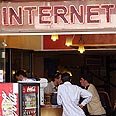
New Orthodox drink more beer
Consumer habits of haredi sector becoming more like secular population, with one difference: Ultra-Orthodox prefer to live in Jerusalem
The Geocartography Institute, headed by Prof. Avi Degani and Dr. Rina Degani, surveyed the Orthodox population in 2006 in advance of an upcoming convention on marketing for the haredi sector. The summit, “Marketing to the Orthodox – a potential Garden of Eden,” was sponsored by the Israeli Center for Management and will take place Thursday in Tel Aviv.
Dr. Degani assessed that Orthodox habits and tastes have changed over the past few years due to the proliferation of communication devices such as televisions, computers and cellular phones.
“The haredi sector is a little less cut off, and many of them live in the centers of secular cities,” she says.
About 650,000 Orthodox Jews live in Israel currently, which make up about 116,000 households. The average haredi family has 5.5 members, and some 40 percent of households have seven or more family members.
The data, which cover a time period of a few years, exhibit a noticeable increase in brand-name purchasing and consumerism in general among the Orthodox.
Same wine brands
According to the poll, 36 percent consider brand names when they buy products, compared to 40 percent among the secular. This is a rise form 30 percent five years ago.
The purchase of wine and alcoholic beverages has also gone up: Beer consumption increased 35 percent and wine consumption 25 percent. The increase is attributed to the drop in prices in recent years which have made alcoholic beverages more available to people in lower income brackets.
Fifty percent of Orthodox consistently buy the same wine brands, compared to 33 percent among secular, because the religious consider the degree of Kashrut when shopping.
Car ownership has also gone up significantly. Five years ago one quarter of the religious population owned cars, compared to 32 percent this year.
The demand to buy apartments among Orthodox stands at roughly 3,500 housing units per year, which is 35 percent higher than among the rest of the population.
Jerusalem and the surrounding areas are considered the most desirable living locations: Some 35 percent of apartments purchased by the haredi sector yearly are in or near the capital. Bnei Brak is second, with 25 percent, and the southern cities of the Dan bloc place third – with Ashdod leading the pack.
About 40 percent of the Orthodox public take yearly vacations, mostly within Israel. The preferred destinations are Tiberias, Jerusalem and Safed.
Willingness to enter the work force has also increased, according to the Geocartography Institute survey. Some 40,000 people between the ages of 18 and 65 want to work. At least 40 percent of Orthodox men and women are employed at least part time. Some 45 percent of unemployed haredi women and 30 percent of haredi men would consider working if they were offered reasonable work conditions.
In the past five years, the average income of Orthodox households has increase by 8 percent, which apparently explains their increasing consumerism.
Shoshana Chen contributed to the report










